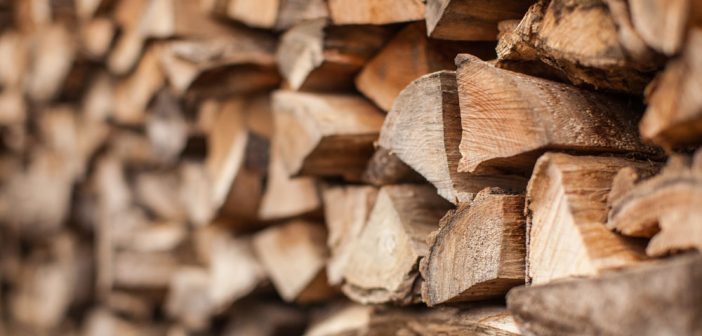Keeping your firewood dry and ready to use throughout the winter months is essential to ensuring you have access to wood that will burn properly and keep you warm. Additionally, since firewood costs a lot of money, it is important to protect your investment and store firewood in the best way you can.
1. Storage
Determining the best place to store your firewood is important as this will protect your investment as well as your home. When deciding where to store your firewood, you should choose a place that has the appropriate amount of space that will allow you to access and take care of your firewood.
Log rack
A log rack is a good choice for storing your wood outside your shed or home. Whether you build or buy one, it should be designed to keep your wood a few inches off of the ground. This will keep your wood away from insects and help to keep it dry.
If possible, you should place the log rack on a patio or cement as this will keep the rack stable. If you must place it on the ground, you should be sure to stake it into the ground to ensure it is stable. If the log rack begins to lean, it will become unstable and may fall over.
Because insects are attracted to firewood, it is important to store the log rack at least 30 feet from the house to ensure these pests do not end up in your home. If this is not possible, you should be sure to not stack the wood up against your house. Even a little bit of room between the wood and your home will allow the air to circulate and provide your home some protection against wetness and insects.
Wood shed
One of the best places to store firewood is an open-ended wood shed. Seasoned firewood needs to remain dry, and air circulation is a key factor in helping your wood stay fresh and ready for burning. In addition, a wood shed keeps your wood off the ground where moisture and insects abound.
When choosing where to put your wood shed, keep in mind how far you want to walk to retrieve your wood during the damp winter months.
Fireplace log rack
Although you may be tempted to keep your wood in your home, this is not recommended as firewood is notorious for harboring insects. However, it is okay to have a fireplace log rack, which is a smaller version of a log rack, close to your fireplace for convenience. Be sure to inspect each log for bugs before placing it in rack as you do not want to accidentally cause an infestation in your home.
If you decide to store your firewood in your home, you can use your basement or garage. That said, you should only use your home if there are no air passages into your home or any other ways for pests to get into your home. Again, the most optimal place to store your firewood is outside, at least 30 feet from your home.
2. How to Stack
How you stack your wood is as important as where you stack it. The main goal in properly stacking firewood is to keep bugs and moisture away from the wood. Any moisture that the wood absorbs will cause it to decay and prevent it from seasoning properly. Additionally, fungus and mold will grow on most wood that is exposed to moisture.
When stacking wood on the ground, you should first place some 2 X 4s parallel to one another on the ground. You should make sure they are approximately 12 to 14 inches apart. You can also use wood pallets if you prefer. Whichever base you choose, the important thing is that the wood is off of the ground.
To begin stacking, you should first lay a row of firewood on the 2 x 4s, ensuring the wood is placed tightly together to make the wood pile stable. Although the length of your pile does not matter, you should be sure to keep the height to a maximum of 48 inches. Wood that is stacked higher than 48 inches can become unstable and may fall over.
If your wood pile does not have a metal t-post at either end, you should gradually taper the ends back so that the wood does not slide off onto the ground. For added stability, you should stack the wood in a crisscross pattern rather than in rows. Additionally, a crisscross pattern allows for better air flow which helps the wood dry. For more than one stack of wood, be sure to keep at least 12 inches between them so that air can flow between the stacks.
3. Protect
Of course, a properly stacked wood pile is typically not enough to keep your wood protected throughout the winter. As such, you need to consider how you will protect the wood from the elements, such as rain and snow.
Covers
If you live in a region that experiences a lot of snow or rain and do not have access to a shed or other structure, your wood stack could benefit from a firewood cover. One of the most common covers used is a blue tarp. You can simply place the tarp over the top of the pile.
Be sure to not cover the entire pile as this will block air flow. Blocked air flow will lead to an environment where moisture is trapped and mold and fungus thrive. After placing the tarp over the top of the pile, you can simply tie it down with rope and some stakes. Doing so ensures the wind cannot blow it off your wood pile.
Of course, you can also purchase a cover that is specifically designed to cover a stack of firewood. In addition to covering the top and sides of the stack, they have small ventilation holes on the ends to allow for proper air flow.
Note: do not use a cover with green firewood as it will not allow the wood to dry properly. In fact, for most types of wood, it typically takes a minimum of six months to cure to ensure most of the moisture is gone.
Storage shed
As previously mentioned, storing your firewood in a shed provides superior protection from the elements as it has a roof and sides to protect the wood while also allowing adequate air circulation. They come in many different sizes and styles, but the best ones include a slanted roof and overhang that covers the pile on all sides. A slanted roof that overhangs the wood allows the water to easily run off the roof while not dripping onto the wood.









